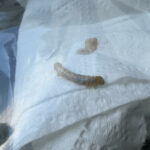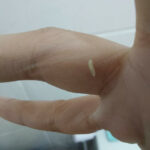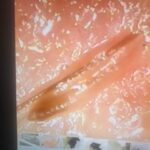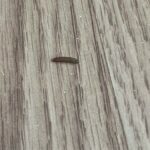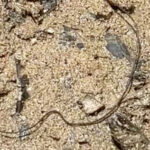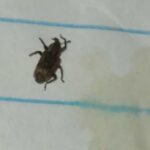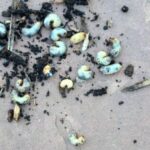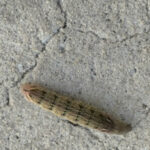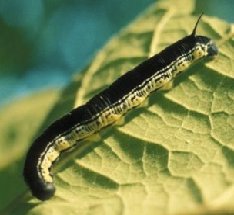
“Can you tell me what this is?” is all this reader asks in her submission regarding the cream-colored, worm-like creature pictured below. Now, since we can only go on the photo our reader sent in, we will have to say that any identification made is not made with 100% certainty or accuracy. Especially in this case: the physical characteristics of this creature are so generic that it could be any number of things, and without the context in which the critter was found, we cannot pinpoint exactly what it could be. What we will say is that it is definitely the larva of an insect, and, assuming it was found inside our reader’s home, we would say it is likely some type of moth caterpillar, and potentially a pest at that.
To us, this looks like it could be a pantry moth caterpillar or a clothes moth caterpillar, and those are the most common caterpillars to find around one’s home, as their diet consists of things found around the home. Pantry moth caterpillars, as their name suggests, are typically found in or around the pantry and kitchen. They eat dried food goods like rice, cereals and pet food. Signs of infestation in the food include the presence of larvae, faecal pellets, eggs, webbing, and the food being discolored and spoiled. Any infested foods should be thrown out in an outdoor bin (so as not to let the infestation continue indoors). Similarly, cleaning up spilled organic debris (food crumbs and the like) is important in controlling and preventing infestations of pantry moth caterpillars.
Clothes moth caterpillars, on the other hand, munch on the organic fibers present in clothing, bed sheets, carpets, and other textile items. Like pantry moth caterpillars, they lay their eggs on their food source, and oftentimes, these eggs are invisible to the naked eye. To control and eliminate infestations of clothes moth caterpillars, one will want to launder any infested items (and nearby items that are even partially organic in make) at the highest temperature they can withstand. Additionally, vacuuming one’s home is paramount to eliminating any other unseen eggs. To prevent clothes moth infestations, it is important to install preventative measures, such as screens in windows and vents (and replacing or mending any torn screens), storing unused garments in airtight containers or vacuum-sealed bags, and sealing sizable cracks in walls and floors using caulk.
In conclusion, the cream-colored, worm-like critter our reader found is likely some type of caterpillar pest. The two most common pests that are caterpillars are pantry moth caterpillars and clothes moth caterpillars. We hope this helps, and we wish our reader the very best!
All About Worms is always free, always reader-supported. Your tips via CashApp, Venmo, or Paypal are appreciated! Receipts will come from ISIPP Publishing.
You might also find these guys interesting!




